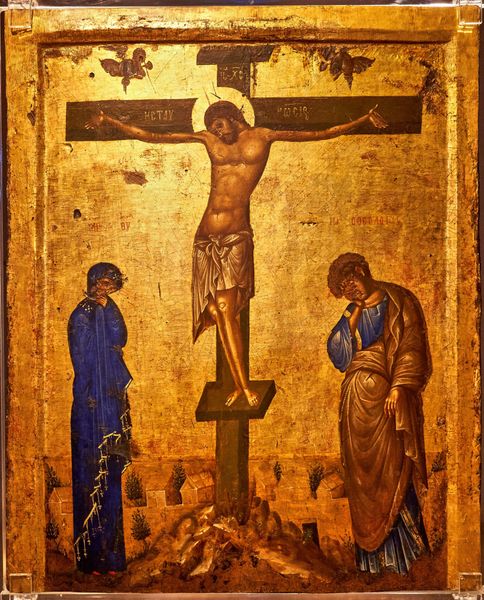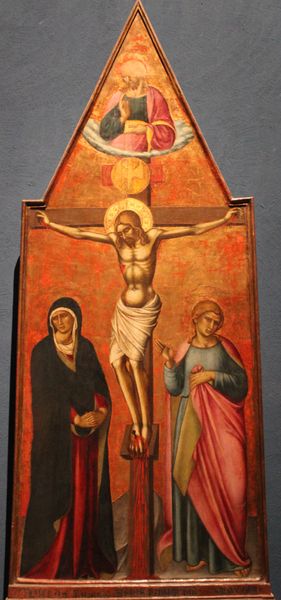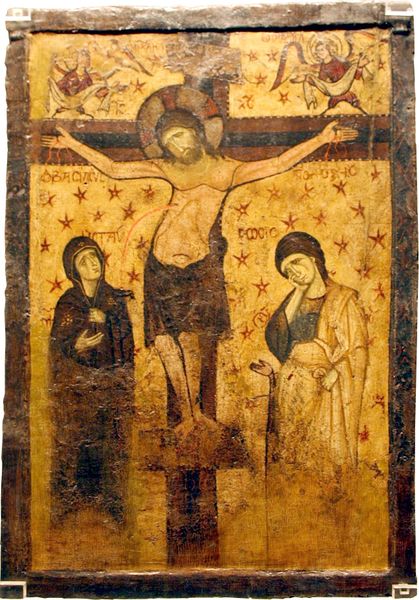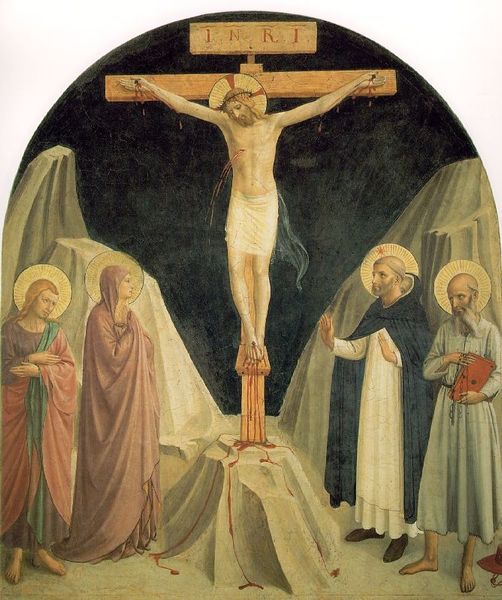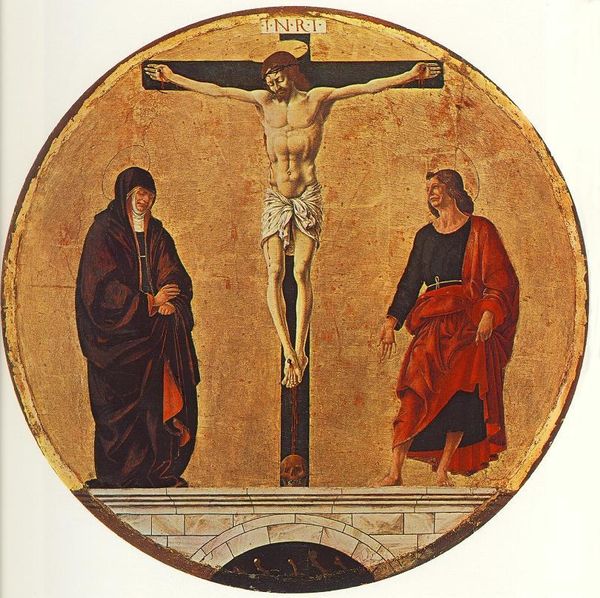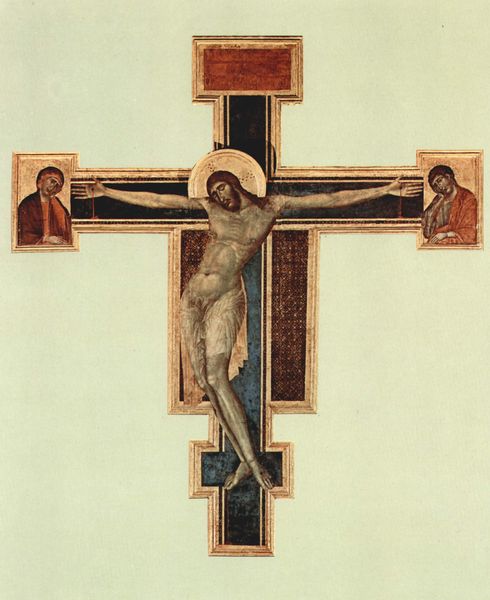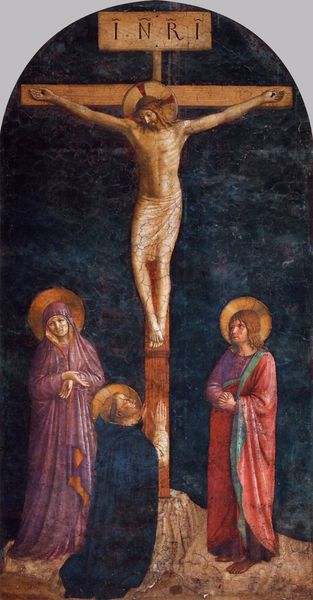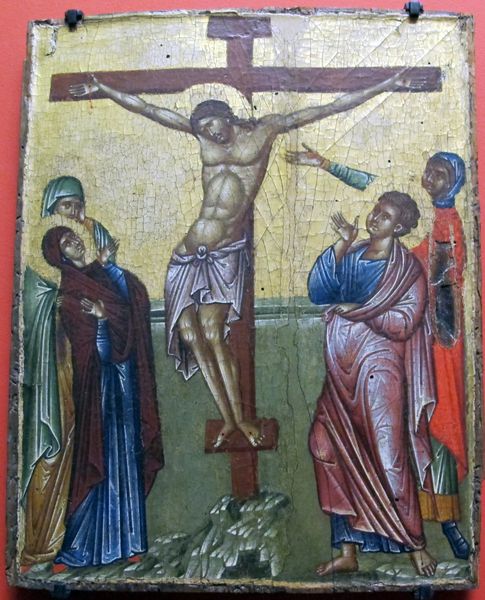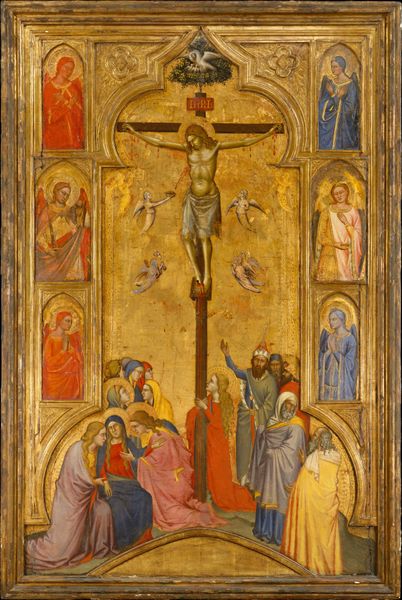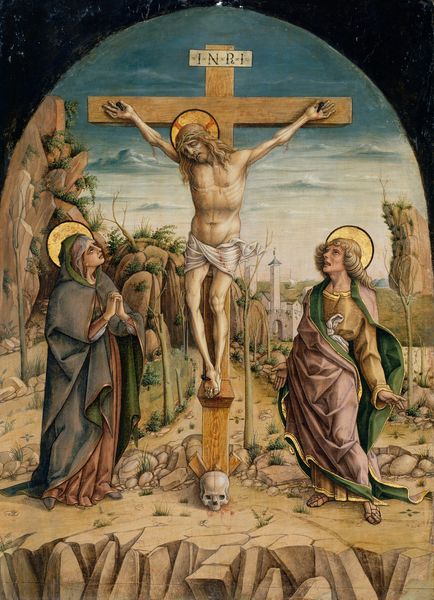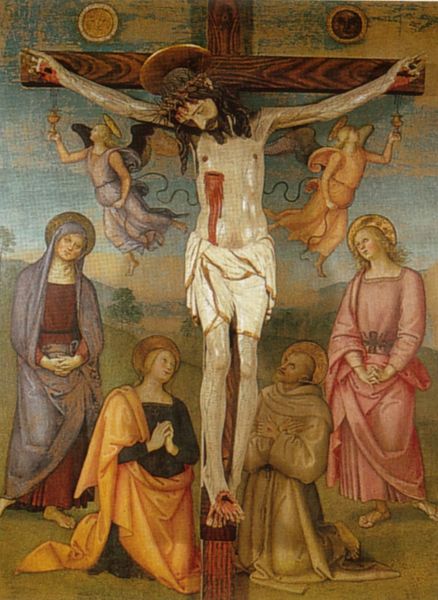
tempera, painting
#
byzantine-art
#
medieval
#
narrative-art
#
tempera
#
painting
#
figuration
#
naive art
#
history-painting
Dimensions: 120.5 x 67 cm
Copyright: Orthodox Icons,Fair Use
Curator: Standing before us is a tempera on panel artwork entitled, “Crucifixion,” created around the year 1300. It resides within the collection of Saint Catherine’s Monastery, located in Mount Sinai, Egypt, an environment steeped in Orthodox tradition. Editor: My initial impression is one of striking angularity. The elongated figures, sharp lines, and even the folds of their garments create a dramatic and almost unsettling visual rhythm. Curator: Indeed. Consider the historical context. This piece emerges from a Byzantine artistic tradition, but one inflected by its geographic locale. We must acknowledge the piece’s intersection with socio-political conditions that have marked representations of faith in similar ways over time. The exaggerated anatomy of Christ emphasizes suffering, something that has played an essential role across cultural representations of the marginalized. Editor: Precisely, and that focus informs the composition. Observe how the artist uses color: the somber reds and browns set against the gold background force the viewer’s gaze to Christ, the only illuminated area. The angels above adopt similar hues, mirroring in gestures what the other figures express through color, creating a striking and cohesive scene. Curator: It’s interesting how you note those parallel narratives of suffering are visually echoed in the composition. Art isn’t merely aesthetics; it’s the intersection of representation and social consciousness, influencing identity, gender, and politics. In our cultural milieu, such images evoke questions about sacrifice, power, and who gets remembered, and how. Editor: Agreed. By understanding the visual language, the semiotics, the compositional choices, we can then move towards understanding not only the intent of the artist, but the deeper meanings within the work, which become reflections on more broadly conceived universal truths. Curator: So, both methodologically, as well as in our separate yet similarly engaged perspectives, we acknowledge this work's contribution as cultural artifact as well as enduring social critique. Editor: Indeed. What appears formalistically interesting provides critical cultural and historical reference to broader conversations across cultures.
Comments
No comments
Be the first to comment and join the conversation on the ultimate creative platform.
